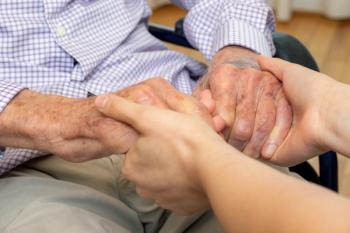
Black maternal health: Addressing the national crisis
With the observance of Black Maternal Health Week, Kisha Davis of the American Academy of Family Physicians talks about the crisis and protecting mothers.
Too many women in America are dying or suffering severe complications to pregnancy, but Black women are seeing even higher risks of poor outcomes.
With the observance of Black Maternal Health Week (April 11-17), healthcare leaders are drawing attention to the crisis. Kisha Davis, MD, a board member of the American Academy of Family Physicians, outlines a host of reasons for the disparities in outcomes for Black mothers.
Black women are
“I also don't want to discount the impact of racism and a person's experience of racism,” Davis says.
Black women are too often dismissed by clinicians when they feel like something is wrong. Serena Williams, the tennis legend and global icon, wrote an
In an interview with Chief Healthcare Executive®, Davis outlines steps to improve outcomes for Black mothers. She discusses the role family physicians can play, the need to educate providers, addressing bias and how hospitals and health systems can improve outcomes.
“Giving birth is a very vulnerable time for all women, especially Black women,” Davis says.
(See part of our conversation in this video. The story continues below.)
Addressing access
More than 1 in 3 counties across the country qualify as
“It really is a huge challenge,” Davis says.
Since 2011,
Family physicians can help fill the void in areas where obstetric care is limited or nonexistent, she says.
In addition, family physicians can build relationships with patients and help them monitor issues such as high blood pressure. They can help women get healthier before they think about having children.
“The best birth outcomes start before that baby is even conceived,” Davis says.
Telehealth can offer more assistance to women who don’t have easy access to obstetric care, she adds. Some health providers are using telehealth and remote patient monitoring to keep tabs on patients at higher risk, before and after delivery.
“One of the benefits of COVID is that we learned how to do telehealth in ways that we hadn't before, especially when we think about those maternity care deserts,” Davis says.
Davis also says the expanded use of doulas, who help guide women during pregnancy and delivery, could improve outcomes for Black women. Doulas can also help patients express their voice and ensure clinicians understand if something is wrong.
While doulas can lead to better outcomes, she says funding for doulas is difficult, and many doula programs are privately funded. But she hopes to see the wider use of doulas.
“We've seen some really great outcomes,” Davis says.
Educating clinicians
Given the higher rate of death and complications for Black women, it’s clear providers need better education in order to achieve better outcomes.
Davis pointed to the use of bias in calculating the risk of patients having vaginal birth after a cesarean section. Black and Hispanic patients are less likely to have a vaginal birth following a C-section than white patients, in part due to a risk calculator reflecting bias, the
“Race is a factor in those tools,” Davis says. “And we know that that has led to disparate outcomes. I am encouraged that the medical community is moving away from using those tools and developing new tools that help us to better assess somebody, regardless of their race.”
Providers need better guidance in caring for Black mothers and making them feel heard if they are expressing a concern, Davis says.
Health systems and other providers should engage in training in implicit bias, so clinicians can have a greater understanding of where they can improve and communicate better with patients.
“I think we can also do a better job in educating our healthcare teams, from the nurses, the physicians and midwives, the anesthesiologist, everybody that is touching that patient, how we really implement the patient-centered care that we all talk about,” Davis says. “And so making sure that we are listening to our patients, educating that team on bias and the impact bias might have on that patient.”
Providers can look to practice drills that can reinforce lessons for caregivers, she says. In addition, providers can also have more detailed conversations with Black patients about potential warning signs that could indicate complications.
What hospitals can do
In addition to offering better training on clinicians, hospitals and health systems must do more screening of patients to assess potential risk factors, Davis says.
If hospitals aren’t already doing so, they should be assessing their patients for social determinants of health, such as housing or food insecurity and other factors that “are going to impact the life of the mom, baby and family,” Davis says.
“All hospitals should be doing at the very least screening for social determinants,” Davis says.
However, Davis says health systems and hospitals need to go beyond the screening. They need to connect patients to local health departments or community-based organizations to make sure patients get the help that they need.
She stressed the need for greater coordination between hospitals, physicians, and outpatient providers to care for patients, including after discharge from the hospital. Davis, the chief health officer of Montgomery County, Maryland, notes that is an issue Maryland is trying to address.
“I think we all assume that these healthcare entities talk to each other,” Davis says. “But in reality, they don't talk to each other as well as they should.”
As the county’s top health officer, Davis often finds cases where better coordination would have helped patients.
“When you look back, you can see there were points along the way where communication maybe could have happened, or could have happened more smoothly, that would have helped to have better outcomes,” Davis says.
Davis is encouraged with the greater attention being given to maternal health, including the disparities of Black patients. Most states now offer 12 months of postpartum coverage through Medicaid programs, according to
Like many other maternal health advocates, Davis is restless for more progress.
As Davis says, “No one's doing great.”
“I think it's important for us to move beyond looking at and examining the issue to really implementing some of those best practices,” Davis says. “We know what those best practices are and it takes the will to really put them into place.”








































